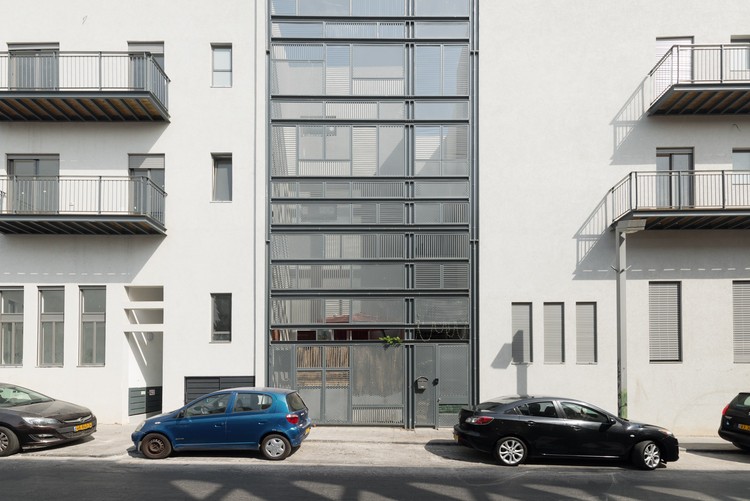
-
Architects: Pertzov Architecture
- Area: 800 m²
- Year: 2017
-
Photographs:Gidon levin
-
Manufacturers: M.G.PROJECTS, VINAR

The Building
The building is located in Jaffa city in a neighborhood full of old eclectic Arabic style houses. This area of Jaffa is in a midst of a rapid urban renewal process. We believe it is a great opportunity and honor for us to take part in this fascinating urban transformation.

As the architects of the building we felt it was important to keep the special atmosphere of the existing local urban environment, while introducing simultaneously a modern design, using materials that are new for this particular area.

The building has 2 residential parts with 8 apartments (each one in a different size and scale – designed for a diverse population). In the middle of the building are spaces where the tenants can meet and mingle, next to an open area intended for circulation and air currents.

The main façade element is the “Mashrabiya” which is typical traditional Arabic concept that was made to provide shade, air, light, and a gentle buffer between interior and exterior. One of the main goals of the plan was to design a “Mashrabiya” that preserves the typical street facades continuity whilst maintaining the privacy of the residents. While “Mashrabiya” is traditional built of concrete or clay, we designed a “steel Mashrabiya” from horizontal steel beams and fillings of perforated metal. We decided to use steel, which is not the obvious choice, because it represents the dialog between the historical and contemporary architecture.

The Apartment
The apartment is located in Jaffa in the part of a neighborhood with many old eclectic Arabic style houses that is experiencing a rapid urban renewal. The building that contains this apartment is part of this fascinating process.
The high ceiling (5 meters high) is typical of the traditional housing in the area and was retained as the main architectonic principle of the new design.

At the request of the owner, the interior was designed with the basic premise to house the art collection in his possession: High empty walls were used as a natural place for the art to be displayed, the concrete floor and ceiling and the white walls providing all together the prefect background. Thus, all the structure in the apartment can be used as art display- even the concrete floor. There are molds imprinted in various parts of the concrete floor which can be used for displaying works of art which can be replaced by other works from time to time

One of the main interior design principle was to create one long space with minimal number of divisions, giving the viewer ample room to survey the work of art. A small backyard entrance paved with concrete surrounded with high walls provides a marked contrast between Pushkin Street outside, and the quite, serene privacy of the art milieu inside.






























.jpg?1508411188)

